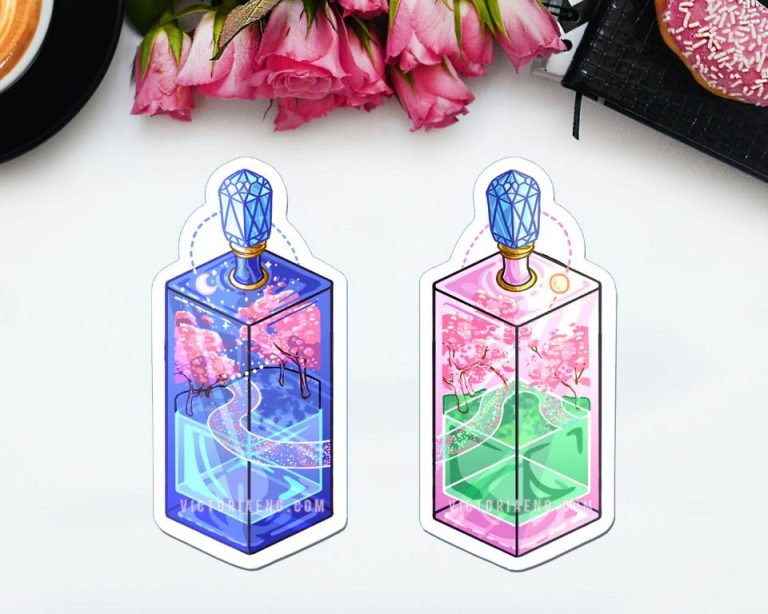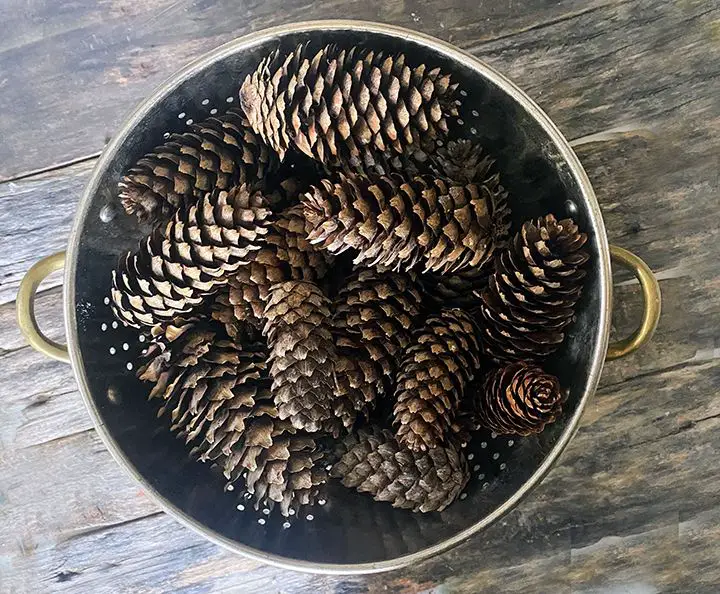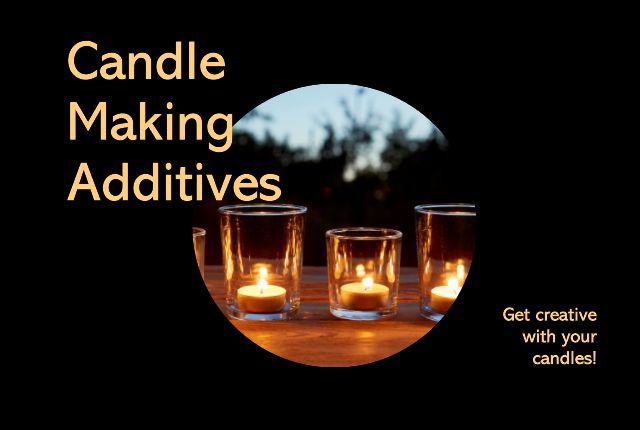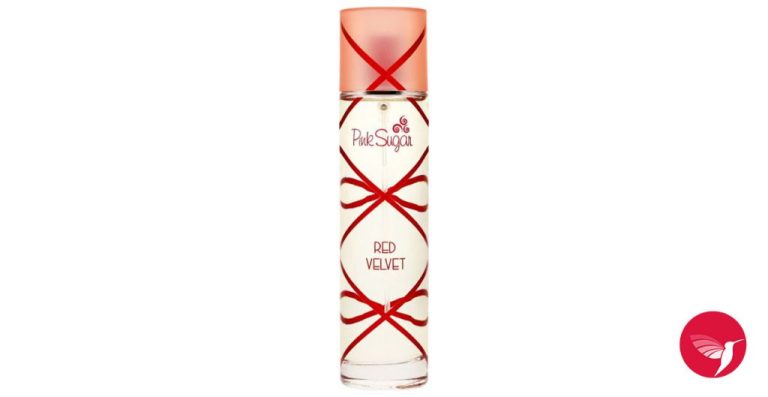What Is The Closest Scent To Vanilla?
Introducing Vanilla
Vanilla is one of the most popular and universally loved scents and flavors in the world. The vanilla aroma comes from the dried seed pods of several species of orchids in the genus Vanilla, primarily the Vanilla planifolia. These orchids are native to Central America and Mexico but are now widely grown around the tropics.
The main chemical component that gives vanilla its distinctive scent and flavor is called vanillin. This organic compound makes up 1-2% of the dried vanilla pods. Vanillin has a sweet, creamy, balsamic aroma with subtle notes of cherry and woody spice.
In addition to vanillin, over 200 other compounds contribute to vanilla’s complex aroma profile. These include heliotropin which gives vanilla its characteristic smooth, creamy texture; anisic aldehyde which provides a faint powdery vanilla note; coumarin with its sweet, creamy profile; and acetyl methyl carbinol which contributes a delicate frothy nuance.
Vanilla’s rich yet delicate bouquet has made it one of the most beloved and recognizable scents used in foods, beverages, perfumes, aromatherapy and more. The flavor and fragrance industries consume over 95% of all vanilla produced globally.
Vanilla Note Breakdown
Vanilla is a complex fragrance comprised of multiple chemical components. Here are the key aroma chemicals that give vanilla its distinctive scent:
Vanillin – This is the primary chemical component of vanilla, providing the characteristic sweet, creamy vanilla smell.
Coumarin – Adds a smooth, sweet, aromatic nuance reminiscent of tonka beans. Often used to enhance and complement vanilla notes. Source
Heilliote – Contributes a rich, deep balsamic vanilla undertone. Source
Anisic Aldehyde – Provides a delicate, creamy nuance to vanilla. Along with vanillin, helps create a full-bodied vanilla profile.
Acetyl Methyl Carbinol – Adds a frothy, almost effervescent quality to vanilla scents.
Vanillin – The Primary Component
Vanillin is considered the primary component and the chemical backbone of real vanilla flavor and aroma. It makes up 1-2% of natural vanilla extract. Vanillin is an organic compound with the molecular formula C8H8O3. Its structure consists of a benzene ring attached to a methoxy group and an aldehyde. The aldehyde group is primarily responsible for vanilla’s distinctive flavor and aroma.
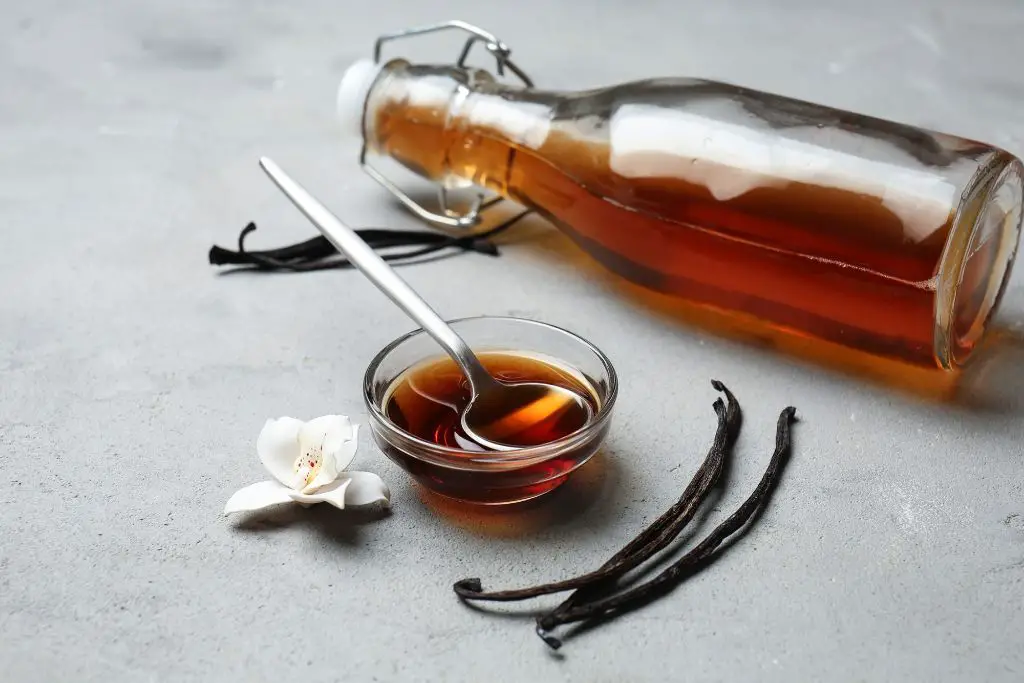
Vanillin provides vanilla’s signature sweet, creamy, vanilla notes. It lends vanilla extract its backbone vanilla flavor. Without vanillin, vanilla would lack much of its characteristic vanilla taste and smell. While vanillin can be synthesized artificially, natural vanillin derived from the vanilla bean has a more complex, rich flavor profile.
According to one source, “The percentage of vanillin in vanilla extract is 0.10% to 0.25% and that has remained consistent for over 100 years.” (https://superfoodly.com/vanilla-essential-oil-absolute-extract/)
Coumarin – The Smoothing Component
Coumarin is an organic chemical compound that contributes to vanilla’s smooth, sweet, and creamy aroma. It has a sweet, vanilla-like fragrance with grassy undertones. According to the National Center for Biotechnology Information, coumarin is used as an “odour-enhancer” and helps create a long-lasting effect when combined with natural essential oils like those found in vanilla (https://www.ncbi.nlm.nih.gov/books/NBK390898/).
Coumarin has a vanilla-like odor that makes it a popular fragrance ingredient, as noted by LiveAbout (https://www.liveabout.com/what-is-coumarin-346213). It provides a smoothing effect to round out the complex vanilla flavor profile. Coumarin also enhances the aroma of vanilla to give it a more pronounced vanilla fragrance.
Research has shown that coumarin is a key component of natural vanilla extracts and contributes significantly to their characteristic flavor and fragrance, according to a study published on ResearchGate (https://www.researchgate.net/publication/227008399_Coumarin_in_vanilla_extracts_Its_detection_and_significance). The amount of coumarin varies based on the specific vanilla variety and origin.
Heliotropin – The Balsamic Component
Heliotropin, also known as piperonal, is an aromatic compound that contributes to the balsamic and vanilla-like fragrance of vanilla (Joulain, 2007). It is found naturally in vanilla beans and provides a sweet, smooth aroma reminiscent of heliotrope flowers.
Heliotropin has a dual role in vanilla’s fragrance profile. Firstly, it imparts a rich, vanilla-like scent that enhances the overall fragrance. This comes from heliotropin’s molecular structure which enables it to bind to olfactory receptors that pick up vanilla-like odors (Wikipedia).
Secondly, heliotropin smooths and rounds out the fragrance of vanilla. On its own, heliotropin has a slightly spicy, powdery aroma. But in combination with other compounds like vanillin, it provides a balsamic, creamy background note – lifting the overall fragrance and giving it more complexity (Phlur).
In summary, the presence of heliotropin is key to creating vanilla’s characteristic warm, balsamic scent – making it an essential component of natural vanilla fragrance.
Anisic Aldehyde – The Creamy Component
Anisic aldehyde, also known as 4-methoxybenzaldehyde or p-anisaldehyde, is an important component that contributes creamy, powdery, and floral notes to vanilla flavor and fragrance1. It is classified as a phenolic aldehyde and is structurally similar to benzaldehyde with a methoxy group substitution2.
In natural vanilla extract, anisic aldehyde makes up around 1-2% of the overall composition. However, it plays an outsized role in contributing a rich, creamy aspect that rounds out and complements the sweet vanillin. Anisic aldehyde helps provide a sweet, powdery nuance reminiscent of milk, cream, or butter. It adds to the full-bodied vanilla profile and accentuates the buttery, cookies and cream character of high quality vanilla.
Synthetic anisic aldehyde is commonly used to enhance and reinforce the creamy notes in artificial vanilla flavorings. When skillfully blended with vanillin and other components like coumarin, it can produce a remarkably natural and well-rounded vanilla replica. The right balance of anisic aldehyde is key in creating a realistic vanilla alternative.
Acetyl Methyl Carbinol – The Frothy Component
Acetyl methyl carbinol, also known as acetoin, is another key component that gives vanilla its characteristic frothy, creamy aroma and taste. It occurs naturally in vanilla beans and provides a buttery, rich quality.1 Acetoin has a sweet, butterscotch-like flavor profile that enhances the smooth, velvety mouthfeel of vanilla.2
In vanilla flavor chemistry, acetyl methyl carbinol imparts a delicate frothiness and gives vanilla its signature melt-in-your-mouth texture. It complements the other components to produce vanilla’s full, complex bouquet. The levels of this compound help distinguish natural vanilla from synthetic vanillin-only flavorings.
Vanilla Substitutes and Alternatives
While pure vanilla extract has a unique and complex aroma, there are several other plants and compounds that share similar scent profiles and notes. These can act as suitable replacements or alternatives when vanilla is unavailable or a different flavor is desired.
Some of the characteristic compounds found in vanilla that contribute to its distinctive fragrance include vanillin, coumarin, heliotropin, anisic aldehyde, and acetyl methyl carbinol. When looking for vanilla substitutes, ingredients that contain one or more of these components are likely to provide a comparable fragrance.
For example, compounds like ethyl vanillin and piperonal (heliotropin) are sometimes added to commercial vanilla flavorings and extracts to enhance the vanilla notes. Botanical sources like tonka beans, cloves, and star anise contain coumarin and anisic aldehyde, allowing them to approximate vanilla’s sweet creamy scent.
While no other plant contains the exact same proportions of aroma compounds as vanilla, careful blending of ingredients like those mentioned above can produce a remarkably similar effect. When choosing alternatives, aim for materials rich in the characteristic vanilla fragrance constituents.
Comparing Vanilla Replacements
When looking for a natural scent that closely mimics the rich, sweet aroma of vanilla, the top contenders are tonka bean and benzoin resin. Though different in origin, both contain chemical components that produce creamy, vanillic undertones.
Tonka bean is the seed of the Dipteryx odorata tree native to South America. It contains high levels of coumarin, an organic chemical compound that gives tonka bean a sweet, vanilla-like fragrance (Delacourte). In fact, tonka bean contains up to 4.4% coumarin versus only 0.2% in vanilla pods. This gives tonka a more intense, concentrated vanilla aroma.
Benzoin resin is derived from styrax trees native to Southeast Asia. As the resin ages, it develops high levels of vanillin, the primary chemical component responsible for vanilla’s scent (Basenotes). However, benzoin resin also contains additional woody and balsamic notes that distinguish it from pure vanilla.
Both tonka bean and benzoin resin offer rich, sensuous vanillic facets that complement vanilla. However, tonka bean provides the closest analog to vanilla’s pure, buttery sweetness due to its high coumarin content and lack of woody nuances. For this reason, tonka bean is considered the closest all-natural match to vanilla’s distinctive fragrance and flavor.
The Closest All-Natural Match to Vanilla
When searching for an all-natural ingredient that most closely mimics the scent profile of vanilla, maple syrup emerges as the top contender. Like vanilla, maple syrup has a sweet, mellow aroma that makes it a suitable substitute in recipes calling for vanilla extract. The key active compound giving maple syrup its signature vanilla-like smell is sotolone. This fragrant ketone compound provides maple syrup with a creamy, buttery note reminiscent of natural vanilla [1].
In addition to a similar scent, maple syrup matches the smooth, rich taste of vanilla extract. When swapped in equal amounts, maple syrup provides a comparable flavor profile in cookies, cakes, and other baked goods. Its moderate sweetness and subtle vanilla nuances allow maple syrup to seamlessly stand in for vanilla extract. For best results, use a high-quality, pure maple syrup. Darker syrups like Grade B tend to have the strongest most vanilla-forward aroma and flavor.
While no plant-based ingredient perfectly replicates vanilla, maple syrup comes closest in terms of scent and taste. With a comparable vanilla-like fragrance and smooth, sweet flavor, maple syrup is the top all-natural alternative for recipes calling for vanilla extract.
[1] https://www.tasteofhome.com/article/vanilla-substitutes/

